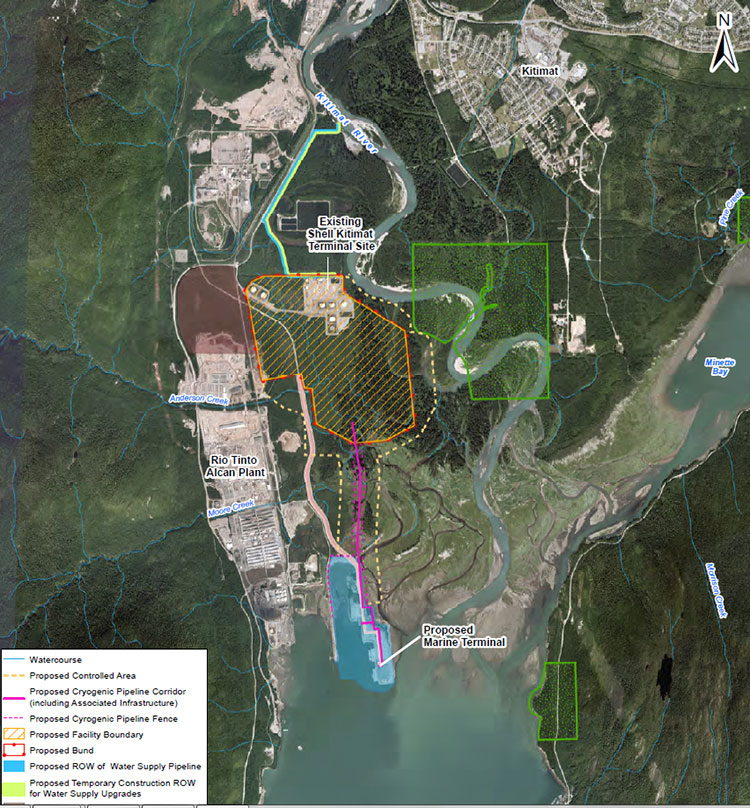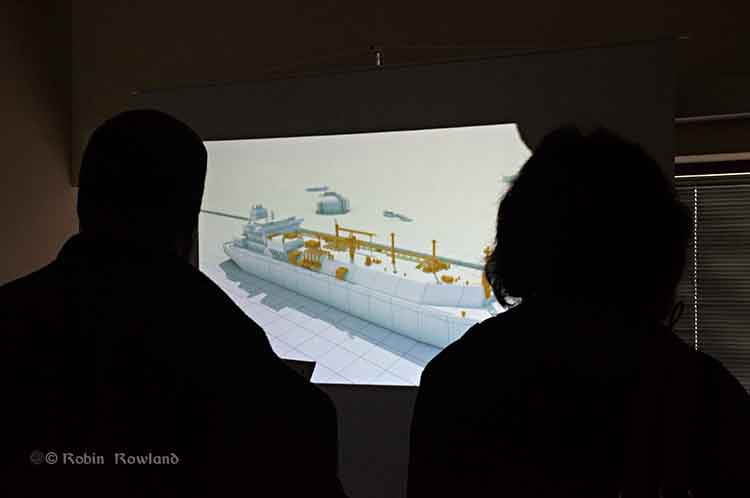LNG Canada has postponed the Final Investment Decision on the Kitimat project citing the “impact of global industry challenges.” The latest estimates said that the project would cost $40 billion.
The news release says that despite strong community support and regulatory approval, what LNG Canada called “the context of global industry challenges, including capital constraints” led to the decision. In other words, the continued low price of oil is constraining projects across the energy industry.
LNG Canada’s Joint Venture Participants Delay Timing of Final
Investment DecisionImpact of global industry challenges, despite strong project fundamentals
Vancouver, British Columbia — Today, LNG Canada announces that its joint venture participants – Shell, PetroChina, Mitsubishi Corporation and Kogas – have decided to delay a final investment decision on LNG Canada that was planned for end 2016.
LNG Canada remains a promising opportunity – it has strong stakeholder and First Nations’ support, has achieved critical regulatory approvals, has important commercial and engineering contracts in place to design and build the project, and through its pipeline partner Coastal Gas Link, has received necessary environmental approvals and First Nations support along the pipeline right-of-way.
“Our project has benefitted from the overwhelming support of the BC Government, First Nations – in particular the Haisla, and the Kitimat community. We could not have advanced the project thus far without it. I can’t say enough about how valuable this support has been and how important it will be as we look at
a range of options to move the project forward towards a positive FID by the Joint Venture participants,” said Andy Calitz, CEO LNG Canada.Through their efforts to build a strong LNG sector for Canada, and a critical, cleaner energy alternative for the world, the governments of British Columbia and Canada have developed sound fiscal and regulatory frameworks for success.
However, in the context of global industry challenges, including capital constraints, the LNG Canada Joint Venture participants have determined they need more time prior to taking a final investment decision. At this time, we cannot confirm when this decision will be made.
In the coming weeks, LNG Canada will continue key site preparation activities and work with its joint venture participants, partners, stakeholders and First Nations to define a revised path forward to FID.
LNG Canada Joint Venture Participants are Shell (50%), PetroChina (20%), Mitsubishi Corporation (15%)
and Kogas (15%).
Haisla Nation chief councillor Ellis Ross issued a statement that said:
Haisla Nation Council very firmly believes in the future of liquefied natural gas for the Kitimat Valley and Haisla territory. It is an industry which has the capacity to grow jobs, provide new training opportunities and provide a sustained quality of life for Haisla members. It’s worth remembering that LNG Canada is a relatively new project to the area, and decisions on major projects such as these can take a long time to reach.
Today’s decision was the second time the FID was postponed. Andy Caloz LNG Canada’s CEO was quoted by Bloomberg News as saying that the project hasn’t been canceled. It has all the necessary approvals from regulators in Canada and doesn’t require any more work in the country.
“The whole global LNG industry is in turmoil,” Calitz told a conference call, Bloomberg reported, adding that Western Canada still has advantages including its proximity to customers in Asia. “I’m confident that the Japanese market remains available to LNG Canada.”










